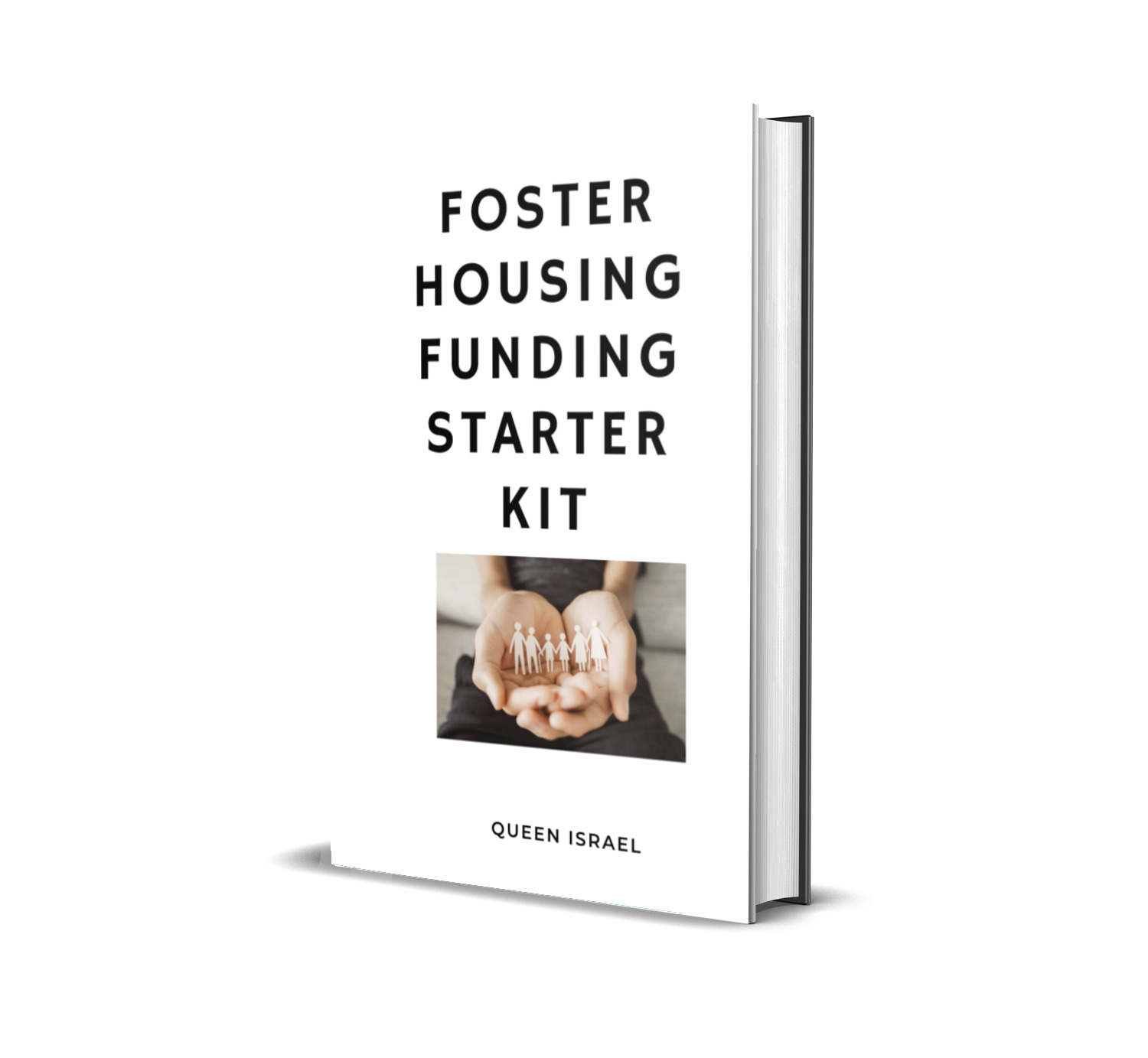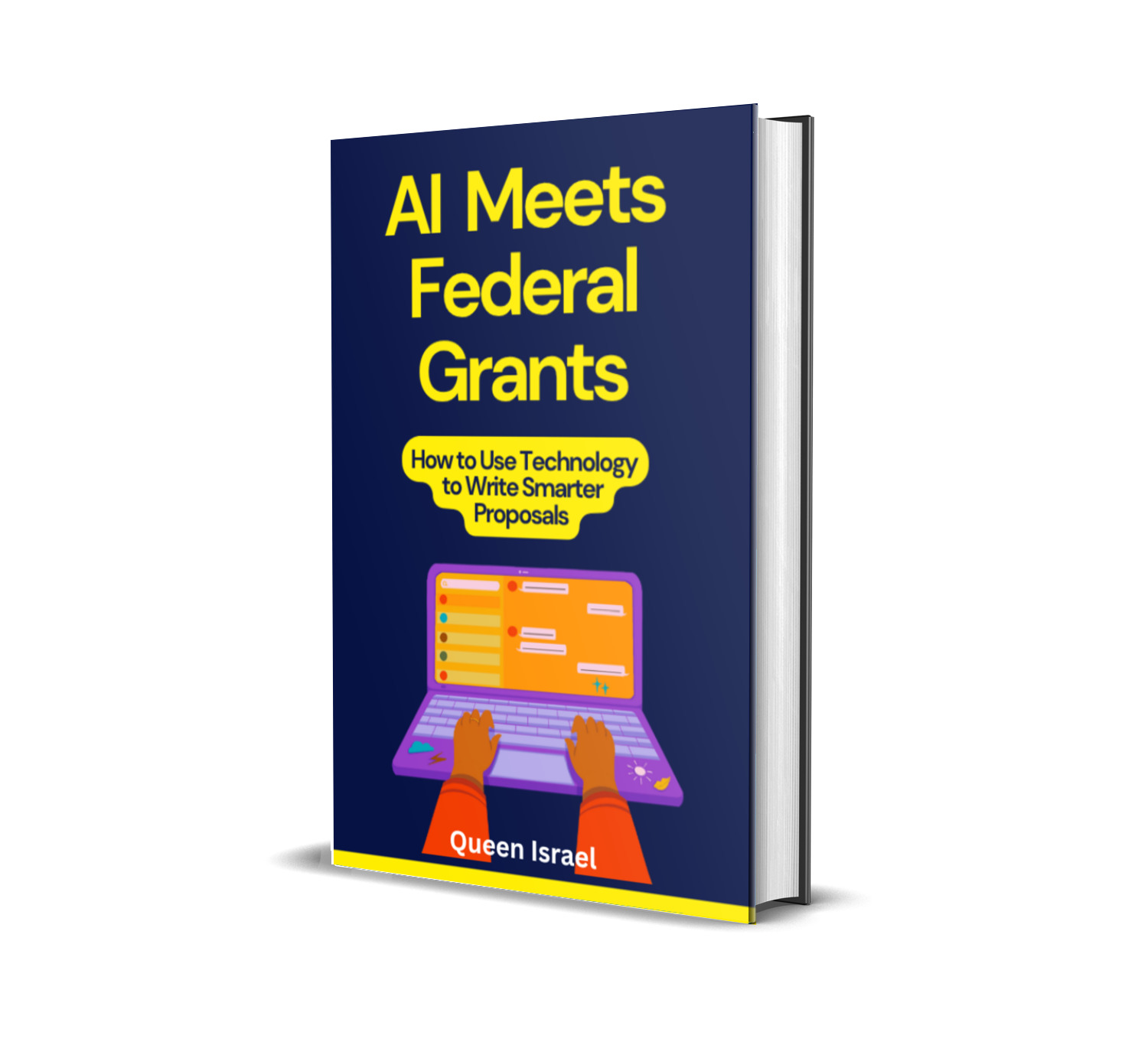When applying for a grant, one of the most powerful tools in your arsenal is data. Including surveys and data in your grant proposal can significantly boost your credibility and strengthen your case.
But, many grant applicants overlook the power of well-structured surveys and the data that comes from them.
In this post, we’ll dive into how to use surveys and data in your grant proposal to make a lasting impression on funders and increase your chances of success. Whether you’re a seasoned grant writer or just starting out, understanding how to collect, interpret, and present data can set your proposal apart.
Grab a cup of coffee, get comfortable, and let’s explore how you can turn raw numbers and survey responses into a compelling narrative that speaks to funders. By the end of this guide, you’ll feel confident in using surveys and data as persuasive tools in your grant proposals.
The Importance of Data in a Grant Proposal
Funders want to know that the project you are proposing is not only needed but that it will have a measurable impact. This is where data-driven proposals shine. By using data in your grant proposal, you demonstrate to the funding organization that you’ve done your homework and that your project has a solid foundation of evidence supporting its potential.
Data and surveys help funders visualize the problem you are addressing, how widespread it is, and why your solution is necessary. Without data, your proposal might come across as an idea rather than a well-thought-out plan with measurable outcomes.
Imagine sitting across from a grant reviewer and confidently presenting not just a dream, but concrete statistics and survey results that paint a vivid picture of the need for your project. Data becomes your ally, lending credibility and substance to every word you write.
Examples of How Data Can Be Used:
- Demonstrating Need: Surveys and data show the scale and seriousness of the problem you are aiming to solve. For example, if you are writing a grant proposal for a program to reduce childhood obesity, providing survey data from local schools on the rates of childhood obesity gives concrete evidence that there is a need for your program.
- Proving Effectiveness: Data from previous similar programs or pilot studies can show that your project has the potential to achieve the desired outcomes. For instance, if your organization has conducted a small-scale program addressing homelessness, survey results that show a reduction in homelessness post-program would be valuable.
- Identifying Trends: Data can reveal trends that support your approach. If surveys indicate that a particular demographic struggles the most, this insight shapes how you tailor your program to meet those specific needs.
- Building Trust with Funders: Including credible data sources and transparent survey methodologies builds trust. Funders appreciate when applicants back up claims with numbers and verifiable data, which shows seriousness and dedication.
Types of Data You Can Include
Not all data is created equal, and not all types of data will be relevant to every proposal. It’s essential to choose the right kind of data that aligns with the goals and objectives of your project. Here’s a breakdown of the most common types of data to include in your grant proposal:
1. Quantitative Data
Quantitative data is numerical and measurable. This includes statistics, percentages, or any data that can be counted or measured. For example:
- Survey results from a sample of your target population
- Statistical reports on the issue your project is addressing (e.g., the unemployment rate, education levels, or poverty statistics in your community)
- Projected growth or changes (e.g., how many people will benefit from your program)
Quantitative data provides a clear, objective view of the situation you’re trying to improve and helps funders see the big picture of your project. When you use phrases like “data-driven” or “evidence-based,” it resonates with reviewers who are looking for solid evidence rather than assumptions.
Real-World Statistic:
According to a 2022 report from the National Center for Education Statistics, nearly 14% of children in the United States live in low-income households. Using this kind of data can significantly strengthen proposals aimed at educational interventions.
2. Qualitative Data
Qualitative data is descriptive and involves understanding experiences, feelings, and perspectives. This type of data is less about numbers and more about insights and emotions. For instance:
- Personal stories or testimonies from people affected by the issue your project is addressing
- Focus group findings where participants discuss their needs, preferences, and expectations
- Interviews with local community leaders, experts, or beneficiaries that provide rich, detailed insights
While qualitative data may not seem as straightforward as quantitative data, it adds depth and context to the numbers, making your proposal more compelling. It humanizes the statistics and creates an emotional connection with the reader.
Fun Fact:
Qualitative data often comes from open-ended survey questions. Including questions like “Can you describe how this issue has impacted your daily life?” can provide powerful testimonials that resonate with stakeholders.
3. Baseline Data
Before implementing your program, you need to establish a baseline. Baseline data shows the current status of the issue you are addressing. This might include:
- The number of people currently affected by the issue
- Current statistics on the success (or lack thereof) of similar projects
- Initial surveys measuring participants’ attitudes, knowledge, or behaviors
This data acts as a starting point that you will compare against future evaluations to show how much change your project has brought about. Baseline data becomes your anchor, allowing you to measure progress and demonstrate tangible results over time.
Tip:
When you collect baseline data, be as comprehensive as possible. It creates a detailed snapshot of the problem before your intervention, which is crucial for demonstrating impact later.
How to Collect Data for Your Proposal
Now that you understand the types of data to include, it’s time to talk about how to collect it. There are many ways to gather data for your grant proposal, but surveys are one of the most powerful and accessible tools for this purpose. Below are a few ways to collect data:
1. Surveys
Surveys are a great way to collect quantitative data directly from your target population. You can use online surveys, paper surveys, or phone surveys, depending on what works best for your audience.
Some popular platforms for online surveys include:
- Google Forms (Free and easy to use)
- SurveyMonkey (Offers more advanced features)
- Qualtrics (Great for advanced survey needs)
When designing your survey, make sure your questions are clear and aligned with the outcomes you want to measure. Include both closed-ended questions (like multiple choice) for easy data analysis and open-ended questions for qualitative feedback.
Conversational tip: Think of your survey like a friendly chat. Start with simple, non-threatening questions to build comfort, then gradually move on to more in-depth ones. This approach increases response rates and the quality of data you receive.
Survey Design Stats:
A study by SurveyMonkey indicates that surveys with 10 to 15 questions typically see a completion rate of over 80%. Keeping surveys concise and focused can dramatically improve the quality and quantity of responses.
2. Interviews
If you’re working on a smaller scale or need in-depth insights, interviews can be a powerful tool. One-on-one conversations allow you to get to the heart of the issue and understand the experiences of individuals impacted by the problem you’re addressing. Interviews can be conducted in person, via phone, or over video calls.
Pro tip: Before conducting interviews, prepare a list of questions but be flexible. Let the conversation flow naturally, as this often unearths valuable insights you hadn’t considered.
3. Focus Groups
Focus groups are great for gathering qualitative data. They allow you to discuss issues in detail with a small group of individuals. This format provides deeper insights into how your target audience feels about the issue, what their needs are, and how they would like to see the solution presented.
Focus groups can also reveal community dynamics that might influence your project. For example, understanding different viewpoints within a community can help you tailor your program to address various concerns and expectations.
4. Public Data and Reports
Don’t forget to utilize publicly available data. Government reports, academic studies, and industry reports are excellent sources of credible and reliable data that can add weight to your proposal. Websites like:
provide free access to a wealth of information that you can use to back up your arguments. Incorporating statistics from these sources shows that you’ve done thorough research and that your proposal is grounded in established facts.
Warm reminder: Always verify the date and source of the data you’re using to ensure it’s current and relevant to your proposal’s context.
Presenting Your Data in the Grant Proposal
Once you’ve collected your data, it’s time to present it in a way that is clear, persuasive, and easy to understand. Here are some tips on how to present your data effectively:
1. Visuals Matter
Data-heavy proposals can quickly overwhelm readers, but visuals help break up the content and make the data easier to digest. Use:
- Charts and graphs to display quantitative data (e.g., bar charts, pie charts, or line graphs)
- Tables to present numerical data in an organized manner
- Infographics to combine data with visuals in a compelling, easy-to-understand way
By incorporating visuals, you not only make your proposal more attractive but also help funders grasp complex information quickly. Tools like Canva and Piktochart make creating professional-looking graphs and infographics simple, even if you’re not a design expert.
2. Tell a Story with Your Data
It’s essential to tell a story with your data. Don’t just present the numbers—explain what they mean and how they relate to your project. For instance, if your survey reveals that 70% of participants have limited access to healthcare, discuss how this issue directly impacts the community and why your program is the solution.
Example Narrative:
“According to our survey conducted across 10 neighborhoods, 70% of residents reported difficulty accessing primary healthcare services due to transportation issues. This gap not only affects their physical well-being but also leads to decreased productivity and higher healthcare costs in the long run. Our proposed mobile health unit aims to bridge this gap, providing accessible care directly to the community and reducing the healthcare burden.”
This narrative approach transforms raw data into a relatable scenario, making a compelling case for your project.
3. Link to Previous Data
To showcase your program’s effectiveness, compare your baseline data with any past data, or use data from similar projects. This creates a sense of continuity and demonstrates that your project has a solid foundation of evidence supporting it.
Continuity Tip: “We know from our baseline survey that 40% of participants lacked access to nutritious food. After implementing our pilot program, follow-up surveys indicated a 25% improvement in dietary habits. This data supports our strategy to expand the program.”
Providing a timeline with before-and-after data not only highlights your program’s success but also sets measurable goals for the future.
Enhancing Your Proposal with Rich Data
Now that we’ve covered the basics of collecting and presenting data, let’s expand further on how you can use this data to enhance every section of your grant proposal. Using data effectively is not just about one section – it’s about weaving evidence throughout your entire document to support your narrative.
1. Introduction and Need Statement
Your introduction should immediately grab the reader’s attention with powerful statistics that underscore the severity or relevance of the issue. For example:
“Did you know that according to the CDC, over 60% of communities lack access to fresh produce, leading to increased risks of obesity and chronic diseases? Our community program is dedicated to changing this.”
By starting with a compelling statistic, you set the stage for why your proposal matters.
2. Project Description
In the project description section, outline your plan clearly, and use data to justify each step. For instance, if you’re proposing a literacy program, you might say:
“Based on our survey of 500 families, 45% of children in our region read below grade level. Our program will provide tutoring and resources to improve literacy, targeting an expected 30% increase in reading proficiency over two years.”
Here, you show that you’ve identified a specific need through surveys and that you have measurable goals tied to this data.
3. Methodology
Describe how you will implement your project, and reference data to explain why this approach is effective. For example:
“Our approach is informed by a study conducted by XYZ University which found that community-based interventions reduce literacy gaps by 40% within a year. By employing similar strategies and using data gathered from initial focus groups, we have tailored our methodology to fit our community’s unique challenges.”
This not only demonstrates due diligence but also reinforces that your approach is backed by research.
4. Evaluation Plan
A robust evaluation plan shows funders that you are committed to accountability. Outline how you will measure success using surveys and data:
“We will conduct quarterly surveys of program participants to measure improvements in literacy rates. Baseline data collected in the first month will be compared with results every six months to evaluate the effectiveness of the intervention. Additionally, qualitative feedback through focus groups will help us refine our approach.”
Providing a clear plan for how you’ll measure outcomes reinforces your commitment to continuous improvement and transparency.
5. Budget Justification
Use data to justify your budget requests. For example, “According to our survey, 75% of families lack access to tutoring services. To address this, our budget allocates $X for hiring qualified tutors and purchasing educational materials, ensuring we meet the community’s needs effectively.”
By tying financial requests to concrete data, you make a stronger case for the necessity of each budget item.
The Power of Data in Grant Proposal Success
Grant writing is highly competitive, and using surveys and data effectively can make the difference between securing funding or being passed over. When you use data-driven arguments to make your case, you show that your proposal is based on real-world evidence, and that gives funders confidence in your ability to deliver results.
Real-World Impact of Data:
- A survey by the Grant Professionals Association found that proposals which included detailed data and clear outcome measurements were 30% more likely to receive funding.
- Organizations that regularly update their data and adjust their programs based on survey feedback tend to have sustained success and higher satisfaction among funders.
These statistics underscore the importance of integrating robust data in every step of your grant writing process.
Final Thoughts
Including surveys and data in your grant proposal is a key strategy for success. By using both quantitative and qualitative data, you provide a comprehensive picture of the problem you’re addressing, the needs of your target population, and the effectiveness of your proposed solution. With the right data, presented in a compelling and understandable way, your proposal stands a much better chance of receiving funding.
Remember, while data strengthens your proposal, the way you weave that data into a coherent, persuasive story is what truly sets your application apart. Make sure to balance charts and numbers with heartfelt narratives that put a face on the statistics.
Ready to take your grant writing to the next level?
Subscribe to the Grant Writing Academy Newsletter for expert tips, strategies, templates, and tools that will help enhance your grant writing success rate.
Our newsletter provides insider techniques on creating surveys, analyzing data, crafting the perfect narrative, and much more. By subscribing, you’ll be joining a community of grant writers who are dedicated to learning from each other and improving their skills every day.
Call to Action: Don’t miss out on these valuable resources. Subscribe now at Grant Writing Academy Newsletter and unlock a treasure trove of knowledge, including:
- Step-by-step guides on designing effective surveys
- Templates for data collection and analysis
- Strategies for presenting data compellingly
- Tools to track and measure your program’s impact
- Real-life success stories from other grant writers






